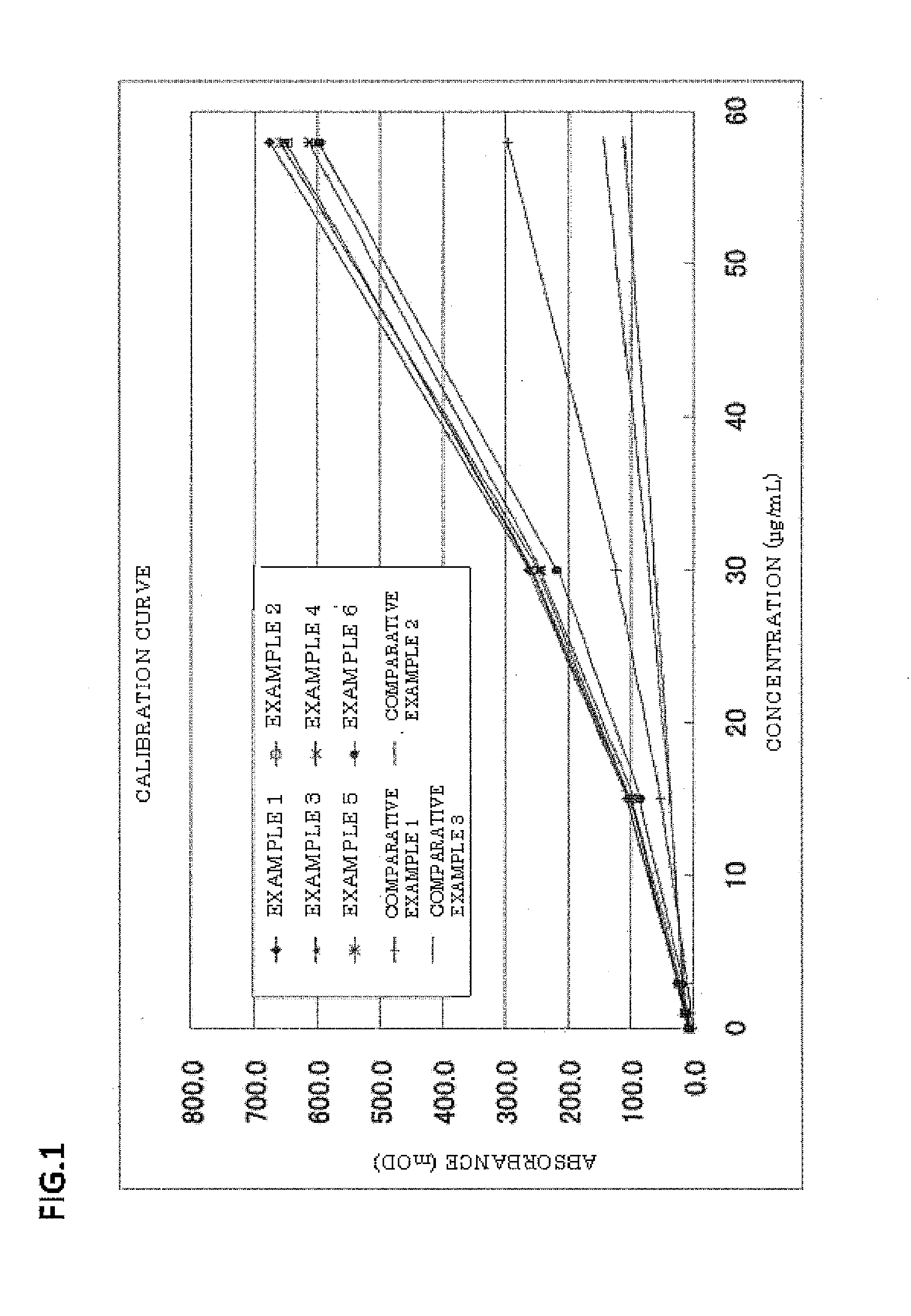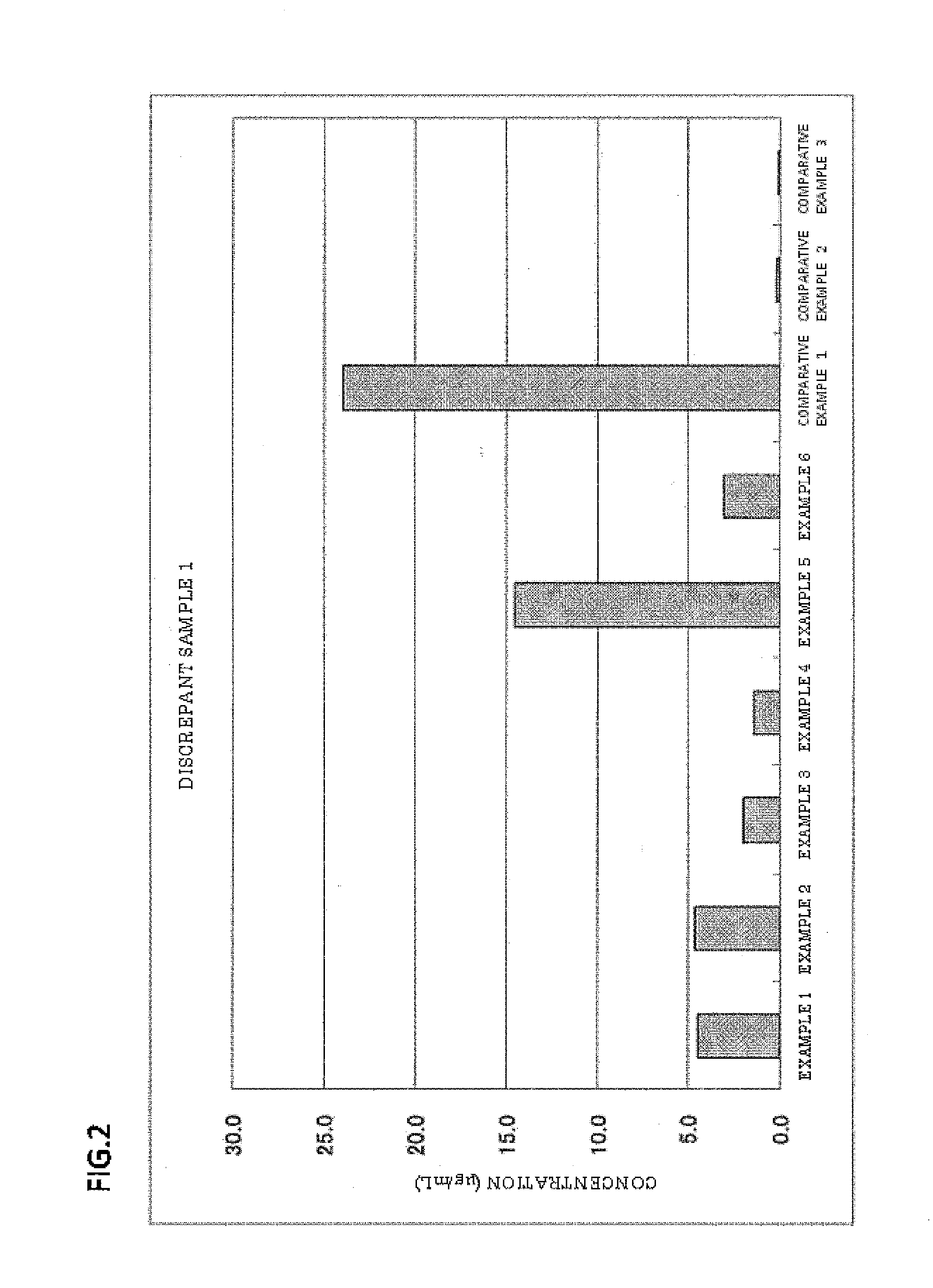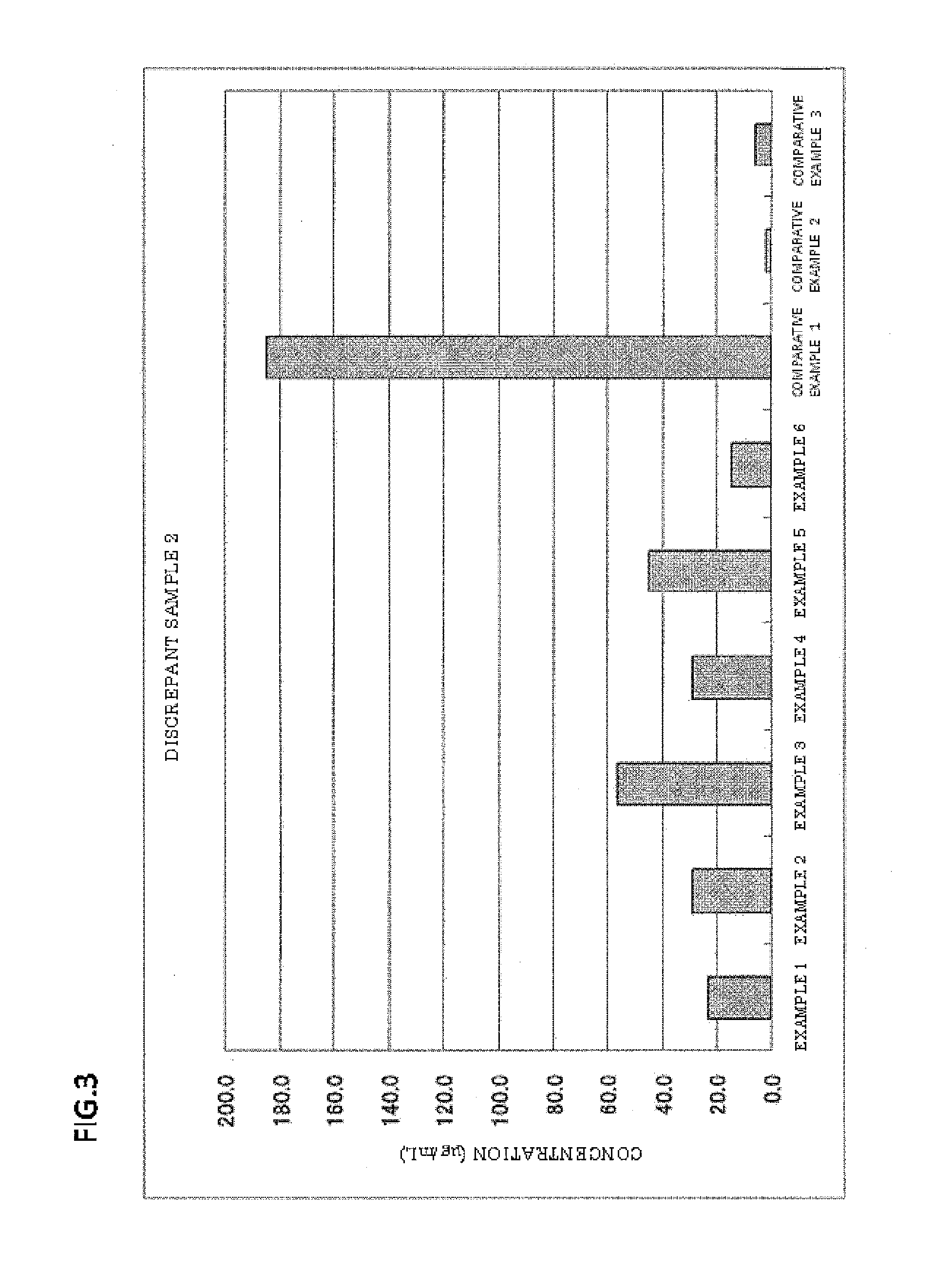Latex particles for measuring particle agglutination
a particle agglutination and latex particle technology, applied in the field of latex particle for particle agglutination assay, can solve the problems of reducing sensitivity, unable to suppress non-specific reactions sufficiently, and unable to achieve a specific reaction, etc., to achieve high sensitivity, easy to produce particle agglutination, and high sensitivity
- Summary
- Abstract
- Description
- Claims
- Application Information
AI Technical Summary
Benefits of technology
Problems solved by technology
Method used
Image
Examples
example 5
[0062]Latex particles were obtained in the same manner as in Example 1, except that the amount of the polyoxyethylene-polyoxypropylene block copolymer (“Epan 410” manufactured by Dai-ichi Kogyo Seiyaku Co., Ltd.) was changed from 0.10 g to 0.05 g. The latex particles had a particle size of 0.110 μm (CV: 10.9%).
example 6
[0063]Latex particles were obtained in the same manner as in Example 1, except that the amount of the polyoxyethylene-polyoxypropylene block copolymer (“Epan 410” manufactured by Dai-ichi Kogyo Seiyaku Co., Ltd.) was changed from 0.10 g to 0.20 g. The latex particles had a particle size of 0.104 μm (CV: 11.2%).
example 7
[0064]Latex particles were obtained in the same manner as in Example 1, except that 0.10 g of polyoxyethylene tridecyl ether (“Noigen TDS-50” manufactured by Dai-ichi Kogyo Seiyaku Co., Ltd., HLB: 10.5) (polyoxyalkylene alkyl ether) was used instead of 0.10 g of the polyoxyethylene-polyoxypropylene block copolymer (“Epan 410” manufactured by Dai-ichi Kogyo Seiyaku Co., Ltd.). The latex particles had a particle size of 0.101 μm (CV: 10.2%).
PUM
| Property | Measurement | Unit |
|---|---|---|
| particle size | aaaaa | aaaaa |
| concentration | aaaaa | aaaaa |
| degree of polymerization | aaaaa | aaaaa |
Abstract
Description
Claims
Application Information
 Login to View More
Login to View More - R&D
- Intellectual Property
- Life Sciences
- Materials
- Tech Scout
- Unparalleled Data Quality
- Higher Quality Content
- 60% Fewer Hallucinations
Browse by: Latest US Patents, China's latest patents, Technical Efficacy Thesaurus, Application Domain, Technology Topic, Popular Technical Reports.
© 2025 PatSnap. All rights reserved.Legal|Privacy policy|Modern Slavery Act Transparency Statement|Sitemap|About US| Contact US: help@patsnap.com



